I would like to create a map of the USA (perhaps a heatmap) to show frequency of a certain characteristic among states. I am not sure of what package to use or if my data is in the proper form. My data is in the table tf
tf
AB AK AL AN AR AZ CA CO CT DC DE EN FL GA HI IA ID IL IN KS
1 21 31 1 12 56 316 53 31 16 7 1 335 63 11 42 29 73 40 2
For the most part, my abbreviations are US (aside from a few Canadian instances). What is the best suggested approach for graphically displaying this on a map?
Now how do I get granularity of less than 50 per color?

